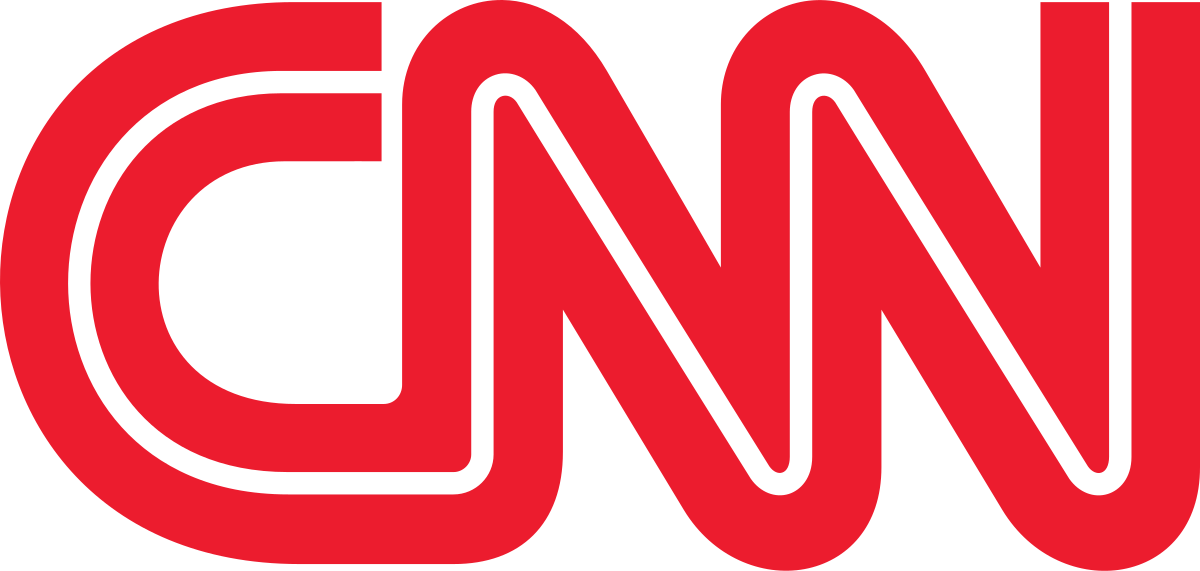Have you ever wondered how computers seem to understand pictures or even videos? It's a bit like teaching a machine to see, you know, to really pick out shapes and textures. This idea, so, of machines learning to recognize things visually, has changed quite a bit how we interact with digital information. It helps everything from finding faces in photos to making self-driving cars work. We're going to talk about a very specific kind of digital brain that helps with this kind of visual discovery, something often called a Convolutional Neural Network, or CNN for short.
This particular kind of digital setup is a special member of a larger family of thinking machines. It’s a bit like how our own brains might process what we see, but in a simplified, step-by-step way for computers. These systems are really good at looking at visual information, like pictures, and figuring out what’s in them, or what they show. They learn to spot distinct features, almost like a detective looking for clues in an image, you see.
We will look at how these systems work, what makes them special, and some of the ways people put them to use. It's pretty fascinating to consider how these digital brains manage to pick up on visual cues and patterns, helping computers make sense of the visual world around us, more or less. We'll explore some of the key pieces that make up these networks and how they process information, just a little.
- Emily Compagno Husband.https
- Morgan Vera Onlyfans.https
- Dana Perino.https
- Is Will Smith Alive 2025.https
- Landon Southern Charm.https
Table of Contents
- What is a Convolutional Network?
- How Do These Networks Find Visual Patterns?
- The Parts That Make Up a CNN Abby Phillips Salary
- What Do Filters and Kernels Actually Do?
- Understanding Input Channels and Feature Maps
- Can CNNs Handle Moving Images or Sequences?
- Different Ways to Shape a Network for CNN Abby Phillips Salary
- The Impact of Layer Sizes in CNN Abby Phillips Salary
What is a Convolutional Network?
So, a convolutional network, often just called a CNN, is a kind of digital brain, a specific type of 'neural network' where some of its processing steps use a special operation called a 'convolution.' Think of it this way: a regular digital brain has layers, and each layer takes information from the one before it and does something with it. With a CNN, some of these layers have a particular way of looking at that incoming information. It’s a special kind of mathematical operation, you know, that helps them find patterns. It’s almost like they're running a small magnifying glass over parts of the data, looking for specific arrangements. This operation is applied to what came out of the previous step, shaping it for the next part of the network's thinking process, more or less.
This particular method of processing is what makes these networks so good at dealing with things that have a spatial arrangement, like images. They are built to spot patterns that exist across an area, such as the edges of an object, or a certain texture. It's different from other types of digital brains that are better suited for information that changes over time, like spoken words or stock prices. Those other types, called recurrent networks or RNNs, are useful for solving problems where the order of things really matters. But for picking out visual details, for example, a CNN really shines, you see.
The way these networks are set up, their general design, often involves a number of these special convolutional steps. Each step has what we call a 'filter.' This filter is like a small window that slides over the input. Inside each filter, there's a tiny grid of numbers, a '2D kernel,' for every piece of information that came in. If you have, say, a color image, it might have separate pieces of information for red, green, and blue. Each of these would have its own little kernel within the filter, helping the network process all the different aspects of the visual data, in a way. This setup allows the network to look for many different kinds of patterns at the same time, which is pretty clever, you know.
- Maal49.https
- Maligoshik.https
- David Bromstad Twin Brother.https
- Filmyfly 2025 Hindi Dubbed
- Lisa Thorner.https
How Do These Networks Find Visual Patterns?
When a CNN is doing its work, each of those 'filters' we talked about earlier creates something called a 'feature map.' This is a new representation of the input, highlighting where certain patterns were found. What's interesting is that it creates just one feature map from each filter, no matter how many separate pieces of information, or 'input channels,' it started with. So, if you have a color picture, which usually has three input channels (red, green, blue), a single filter will still give you one combined feature map. This map shows where that specific filter found its pattern, like a map showing all the places where a certain type of line or curve appeared. It simplifies things, allowing the network to focus on the presence of a pattern rather than its color components, so to speak.
Consider a simple picture, say, one with just a single channel, like an old black and white photo. This kind of input might have a size, perhaps 224 units across and 224 units down. The network starts by looking at this single channel. But sometimes, you might want to do something more complex, like understanding a short video clip. In that case, you could use a separate CNN to pull out important details from, say, the last five moments or 'frames' of the video. Once those details, or 'features,' are extracted, you can then pass them along to a different kind of digital brain, perhaps one that's better at understanding sequences over time, like an RNN. This combination allows for a more complete understanding of moving images, you know, because it brings together the spatial understanding of the CNN with the temporal understanding of the RNN, in some respects.
So, you would first do the part where the CNN looks at the individual frames. This idea of combining different approaches is actually a common strategy in building advanced digital systems. For instance, to create something like a system that can understand 3D facial shapes and expressions, people have found it useful to put together two recent advancements. One is called 'cascaded regression,' which is a way of making predictions step-by-step, refining them as you go. The other is, of course, the convolutional neural network itself. By using these two ideas together, it becomes possible to achieve more complex goals, like accurately mapping a face in three dimensions, which is pretty neat, you know.
The Parts That Make Up a CNN Abby Phillips Salary
When building these networks, there are choices to be made about the size of the 'windows' or filters that scan the data. You might typically use a filter that's 3x3 units in size, meaning it looks at a small square of nine pixels at a time. However, there's another approach that can help keep the network's overall learning ability high while still allowing it to focus on smaller areas. This involves adding layers with '1x1 conv' filters instead of the larger 3x3 ones. I mean, it's a way to process information more efficiently without losing too much detail, almost. For example, in some advanced network designs called 'denseblocks,' the very first layer might still be a 3x3 convolution, but then 1x1 convolutions are used within those blocks to manage the information flow. This helps in controlling how much the network 'sees' at any one time, you know, while still allowing for deep processing.
What Do Filters and Kernels Actually Do?
The way these filters and kernels work together is quite interesting. For every input channel you have, and for every filter you've decided to use, there's a unique set of calculations happening. It's like having a specific magnifying glass for each color or data stream, and then another set of magnifying glasses for each type of pattern you want to find. So, if you have three input channels (like red, green, blue in a color image) and you want to detect ten different kinds of patterns, you would have three times ten, or thirty, different sets of calculations being performed. This is how the network manages to look for so many different things at once, across all the incoming data, which is pretty cool, you know. Each of these sets is designed to pick up on a particular characteristic, helping the network build up a detailed picture of what it's looking at, in a way.
Understanding Input Channels and Feature Maps
To give a concrete example, imagine a picture that only has one channel, like a simple grayscale image. This picture might be sized at 224 units by 224 units. This single channel is the starting point for the network. The filters then work on this single stream of information to produce their feature maps. Even though the input might be simple, the network's ability to extract meaningful features from it is quite powerful. The process of taking an input and transforming it into these feature maps is what allows the network to move from raw data to a more abstract understanding of the content, which is basically what it's all about, you know. It's how it learns to 'see' shapes, textures, and even more complex concepts within the image data, you see.
Can CNNs Handle Moving Images or Sequences?
As we briefly touched upon, while CNNs are inherently good at spatial tasks, they can be part of a larger system that deals with sequences, like video. If you're trying to understand what's happening in a short video clip, for instance, you might use a CNN to process each individual moment or 'frame' in that clip. So, for example, you could take the details that the CNN pulls out from the most recent five frames. These extracted details, which are a kind of summary of the visual information, can then be fed into a different kind of network, one that's designed to understand how things change over time. This approach allows you to combine the CNN's strength in seeing static patterns with another network's ability to understand the flow and progression of events, you know. It's a way to get a more complete picture of what's going on in dynamic visual content, in some respects.
Different Ways to Shape a Network for CNN Abby Phillips Salary
There are different ways to put these networks together, and the choices you make about the size of the 'windows' or filters can have a big effect. As we discussed, you can use smaller 1x1 convolutional layers instead of the more common 3x3 ones. This is a clever trick to keep the network's overall ability to learn and process information high, while still making sure it focuses on smaller, more specific details. It's almost like having a wider lens versus a narrower one, but still getting a lot of information through. I mean, I actually used this approach within certain parts of the network architecture, specifically in sections called 'denseblocks.' In these denseblocks, the very first processing step might still use a 3x3 convolution, which is good for capturing broader patterns. But then, to keep things efficient and focused, subsequent steps within that block might switch to 1x1 convolutions. This mix of sizes helps the network process information deeply without becoming too unwieldy, you know.
The Impact of Layer Sizes in CNN Abby Phillips Salary
The choice between different layer sizes, like 1x1 versus 3x3 convolutions, impacts how the network learns to 'see' and process information. The 1x1 layers, while seemingly simple, are actually quite powerful. They can help reduce the amount of data flowing through the network, making it more efficient, while still allowing for complex transformations of the features. It's like a compact way to refine the information. On the other hand, the 3x3 layers are good for looking at slightly larger areas and picking up on more spread-out patterns. So, combining them, as often happens in architectures like denseblocks, gives the network the best of both worlds. It can capture broad features with the 3x3 layers and then refine and combine those features efficiently with the 1x1 layers. This thoughtful design of the processing steps is what allows these networks to achieve such impressive results in understanding visual data, you know, whether it's for simple recognition or more complex tasks like mapping 3D shapes, in a way.
To sum things up, we've explored how convolutional neural networks, or CNNs, are special digital brains that excel at understanding visual patterns. We looked at how they use 'convolutions' and 'filters' with 'kernels' to process information, creating 'feature maps' from various 'input channels.' We also touched on how these networks can be combined with other systems to handle sequences, and how different layer sizes, like 1x1 and 3x3 convolutions, play a role in their overall design and efficiency. It's a complex but fascinating area of digital processing, you know, that really helps computers make sense of the visual world.
- Filmyfly Filmy
- King Von Dead Body.https
- Bollyflix Net
- Keri Russell Relationship.https
- Richard Thomas Accident Update.https


